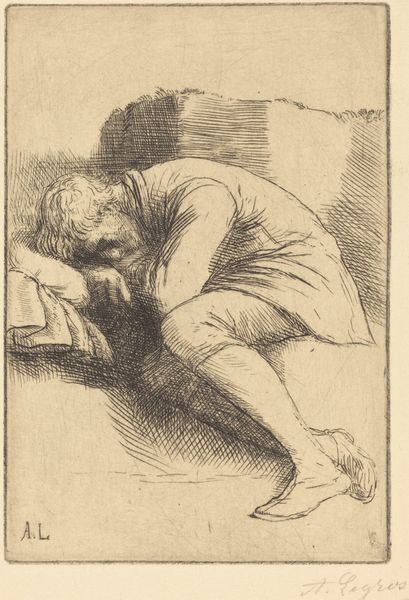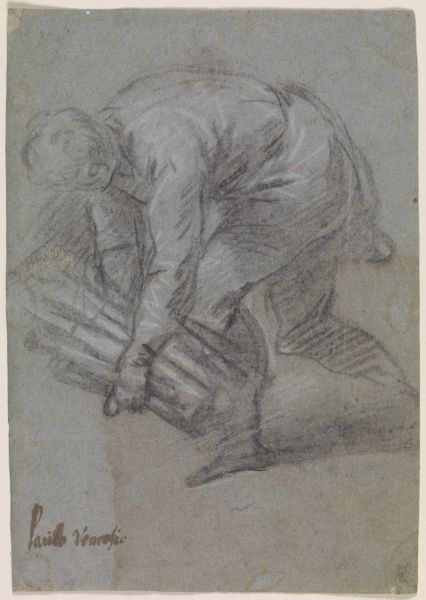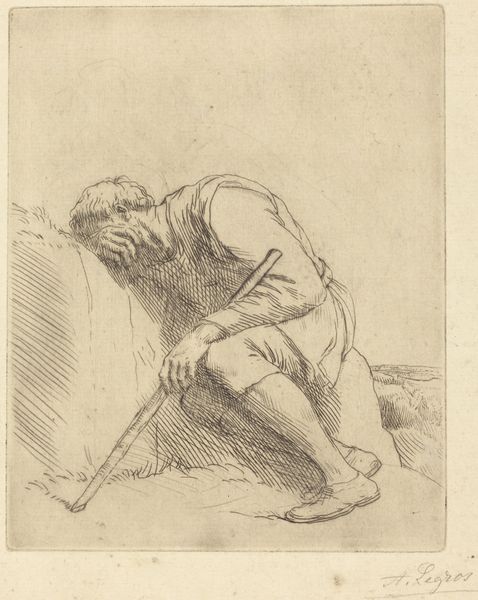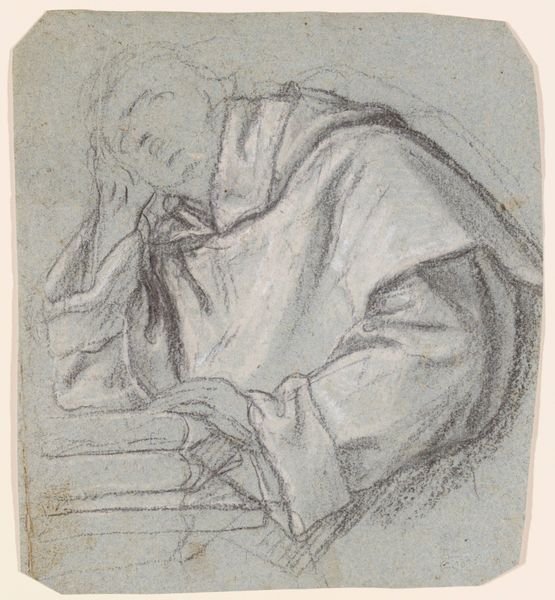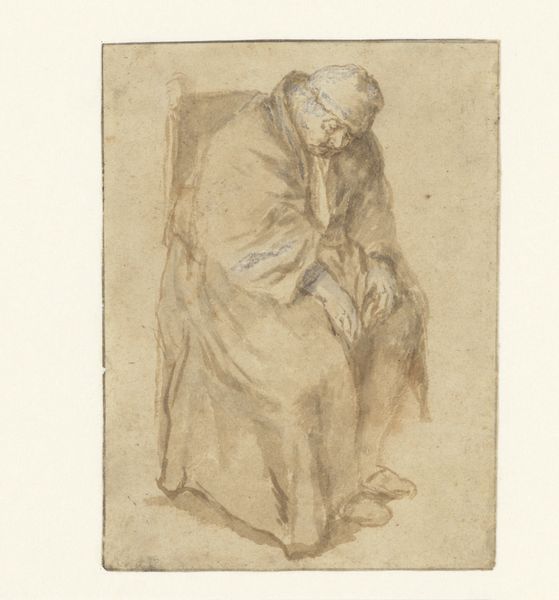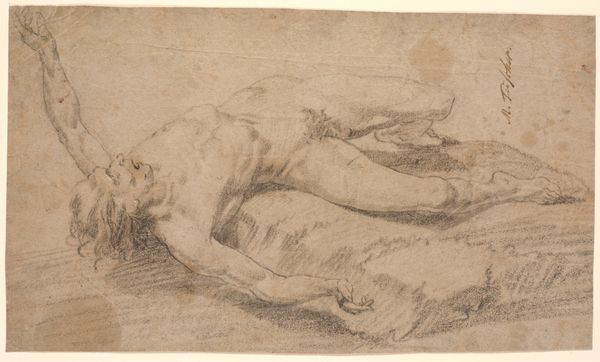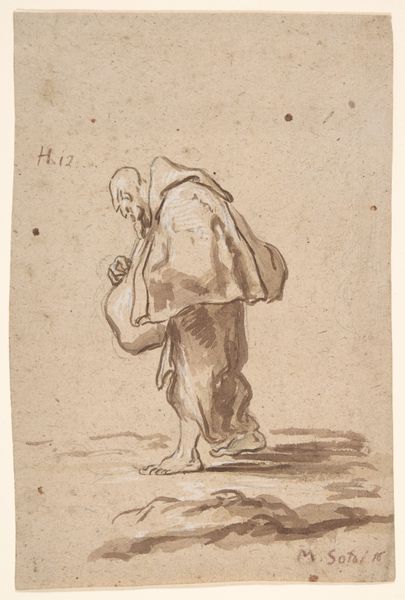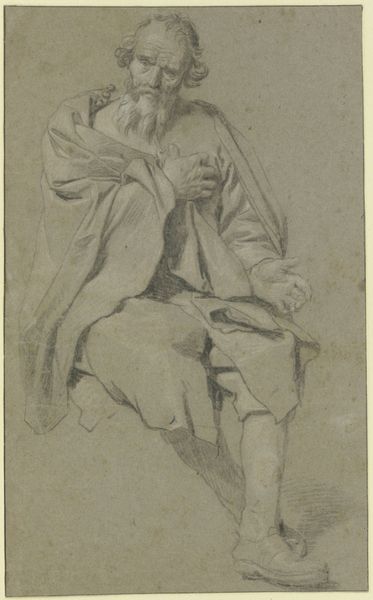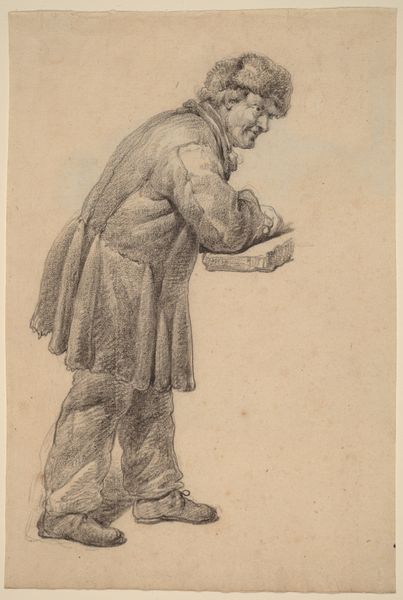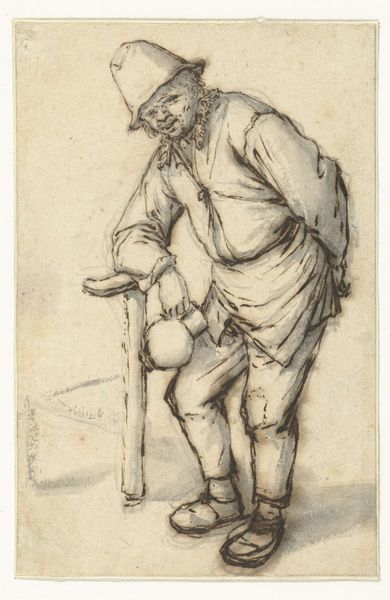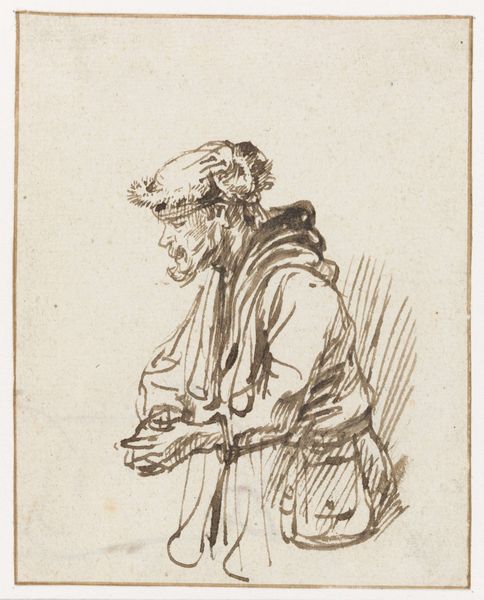
drawing, paper, charcoal
#
pencil drawn
#
drawing
#
baroque
#
figuration
#
paper
#
pencil drawing
#
genre-painting
#
charcoal
Copyright: Public Domain
Curator: Here we have "Kneeling Boy Binding Brushwood" rendered in charcoal, attributed to Adriaen van de Velde, although its exact date remains elusive. It resides here with us at the Städel Museum. Editor: Mmm, spare and touching. The reddish-brown charcoal imbues it with such warmth, don’t you think? There's a certain vulnerability to this solitary boy, bowed in labor, the sticks resembling fragile bones… I wonder about his story. Curator: Well, depictions like these were not unusual in 17th-century Dutch art, especially within the context of genre painting. Artists began finding nobility in everyday life. But you know, these were not always accurate. Van de Velde also created hunting scenes for aristocratic audiences. Were these to celebrate country life, or merely to remind those with wealth of those who served their lavish habits? Editor: Possibly both. Art, even when seemingly simple, often carries that sort of loaded ambiguity, a reflection of the society that produces and consumes it. You see his coat and tell if it is simple protection, I can easily assume a class system. This work seems particularly grounded by his task, as if held prisoner by necessity. His face remains unseen to us but there’s profound intimacy captured in this fleeting moment of focused concentration, almost pained. Curator: And that contrast is powerful, between the particularity of his gesture and the lack of a distinctive face, perhaps that is deliberate. Consider, too, how the art market during this period fueled the development of genre paintings and depictions of rural life. There was a real fascination, even a hunger for the humble made picture-worthy! And also how important this drawing would have been. Many artists would use figure studies, sketches if you like, for much larger paintings that contained small human figures and they had to be correct. Van de Velde also uses a style from the Italian Baroque, it adds depth. Editor: Absolutely! Van de Velde seems acutely aware that observation has the power to shape narrative, influence perspective. It seems as though the bow in his body resembles the willow beside him, binding the same as being bound. There is something intrinsically haunting about witnessing everyday struggle rendered so artfully. Curator: It makes you wonder, doesn't it? It’s the delicate balance, you know, between observing, celebrating, and possibly romanticizing these figures and stories…it can give one cause to consider. Editor: Indeed, a humbling reminder that even in the smallest, simplest images, history and emotion intertwine, prompting endless stories, really.
Comments
No comments
Be the first to comment and join the conversation on the ultimate creative platform.
